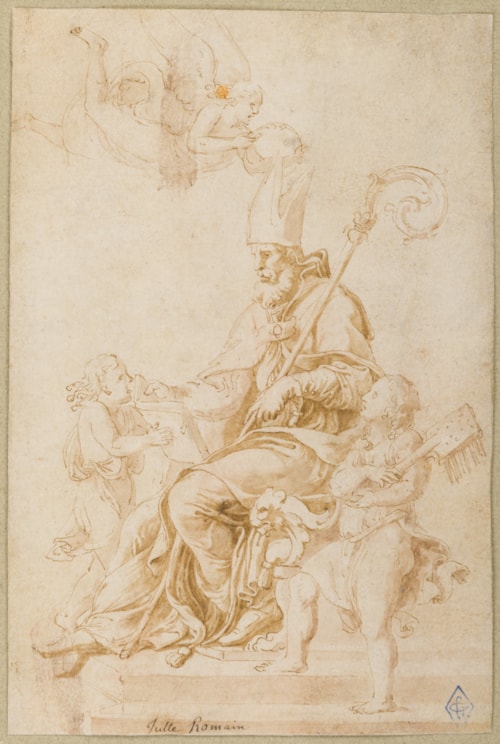
Giulio Pippi, called GIULIO ROMANO
Rome c.1499 - Mantua 1546
Biography
One of the few significant artists of the 16th century to have actually been born in Rome, Giulio Romano was Raphael’s favourite and best pupil, assisting him on the fresco decoration of the Stanza dell’Incendio and the Loggia of Leo X in the Vatican. He rose to a position of some importance in Raphael’s studio, and often collaborated with him on easel pictures. After Raphael’s death in 1520 Giulio, together with Gianfrancesco Penni, inherited the master’s workshop and unfinished projects, notably the fresco decoration of the Sala di Costantino in the Vatican. He also received several architectural commissions, such as the Villa Madama and the Villa Lante in Rome. In 1524, at the invitation of Federico II Gonzaga, Giulio left Rome for Mantua. He was to remain there for the rest of his career, becoming painter, designer and architect to the Gonzaga court and thoroughly dominating the artistic life of the city. His two most important projects in Mantua were the construction and extensive decoration of the Palazzo Te, executed in two phases between 1526 and 1534, and the decoration of a new suite of rooms, known as the Appartamento di Troia, in the Palazzo Ducale, completed in 1538. Giulio continued to work at the Ducal court after the death of Federico Gonzaga in 1540. For Cardinal Ercole Gonzaga, for example, he was engaged on the reconstruction and renovation of the cathedral in Mantua.
Giulio Romano’s drawings have long been admired by collectors and connoisseurs. The 18th century English collector Jonathan Richardson Senior, in his An Essay on the Theory of Painting, published in 1725, noted that ‘There is a Spirit, and Fire, a Freedom, and Delicacy in the Drawings of Giulio Romano, Polydoro, Parmeggiano, Battista Franco, &c. which are not to be seen in their Paintings.’


